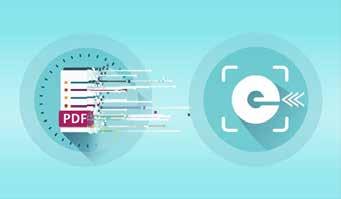
3 minute read
eInvoicing could be your biggest win in 2022
Over the coming months and beyond, a new way of invoicing is going to unlock some significant benefits for business and the economy. It’s called eInvoicing and it’s starting to roll out across New Zealand supported by the Ministry of Business Innovation and Employment.
eInvoicing is not turning an invoice into a PDF – which most cloud software does. Instead, it’s the direct exchange of information between any two ‘eInvoicing-capable’ systems. This enables a low-touch, error-free process that the current practice of emailing a PDF or scanning a paper invoice can’t.
Advertisement
And behind it, is a government-backed eInvoicing network based on an international standard called Peppol, for smooth, secure transactions to different systems and markets. It’s estimated to cost less than $10 to process an eInvoice amounting to savings of $18.00 per paper invoice and $16.00 per PDF invoice. Also, buyers no longer need to manually input invoice data, reducing their costs, the risk of errors and making reconciliation and coding easier. To find out more talk to your business advisor or accountant, and check out eInvoicing at www.einvoicing.govt.nz
The smarter way to invoice
MBIE Chief Financial Officer Stewart McRobie says that with over 280 million business-to-business invoices exchanged in New Zealand annually, savings to our economy through the efficiency and faster payment capability eInvoicing provides will be worth billions to businesses and the New Zealand economy.
“We know businesses could do with a boost in these difficult COVID-19 times. eInvoicing is an exciting next step for them, giving today’s accounting systems a new step up in capability, enabling businesses to be paid faster, improving cashflow and doing business more smoothly, safely and efficiently. “It’s simply a smarter way to invoice and the more businesses that are eInvoice-enabled, the more they, and the economy, will benefit.”
The Government has committed to implementing eInvoicing across all central government agencies. Half will be ready by the end of March 2022, with the remaining planning to be eInvoicing receive capable soon after. Mr Wierzbicki says that already there are more than 4,000 businesses who can receive eInvoices and this is rapidly growing. “With thousands of small businesses already enabled and ready to send eInvoices they’re asking their buyers if they’re ready to receive them. So, if you’re not yet eInvoicing, now’s the time to get started.”
How to get started
Becoming eInvoicing enabled is easy and free or low-cost for most small to medium businesses. Most accounting and finance software, including the likes of Xero, MYOB and Reckon, provide free or low-cost eInvoicing capability.
For large business with more complex systems, there will be some extra steps to transition to eInvoicing. And, as receivers of large volumes of invoices, significant savings can be realised through reduced processing and administration costs. eInvoicing can offer significant savings to business costs. Top five things to know about eInvoicing
1. eInvoicing is NOT sending a PDF invoice
Unlike emailing or posting a PDF, eInvoices are sent electronically through the secure government-backed network right into the buyer’s financial system.
There’s no need to generate a PDF. 2. eInvoicing means faster payments and improved cashflow
With this speedy direct exchange, information is validated as it passes through the network, reducing delays, making payments faster and improving cash flow. 3. Reduced processing costs eInvoicing is estimated to cost less than $10 per invoice amounting to savings of $18.00 per paper invoice and $16.00 per PDF invoice. Buyers also no longer need to input manually, reducing costs, the risk of errors and making reconciliation and coding easier. 4. Improved financial visibility eInvoicing allows for a lot of detail from each invoice to go directly into your finance system, providing better visibility and richer information. This supports you and your business to analyse, forecast, plan and budget, enabling more accurate financial management. 5. It’s easy and it’s free
For most small businesses, eInvoicing is easy and free or low cost to get set up and started. More than 4000 businesses have registered for eInvoicing and the more that are eInvoice-enabled, the more they, and the economy, will benefit.
In 2019, MBIE became a Peppol Authority for eInvoicing (Pan-European Public Procurement Online interoperability framework). As a Peppol Authority, MBIE’s responsibilities include developing regional arrangements and requirements, overseeing local implementation of Peppol, on-boarding and accrediting Peppol access point providers, providing tools and resources to help businesses and agencies adopt eInvoicing.










